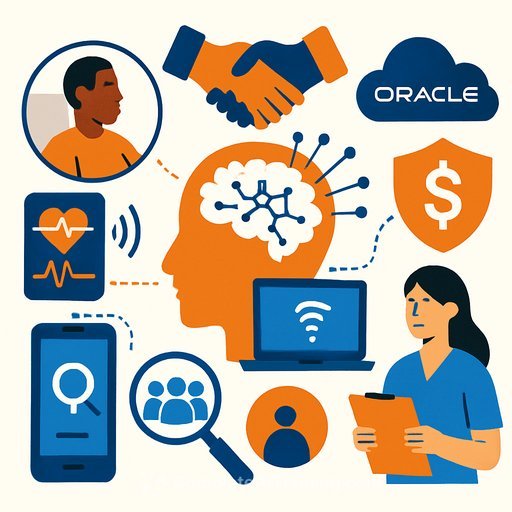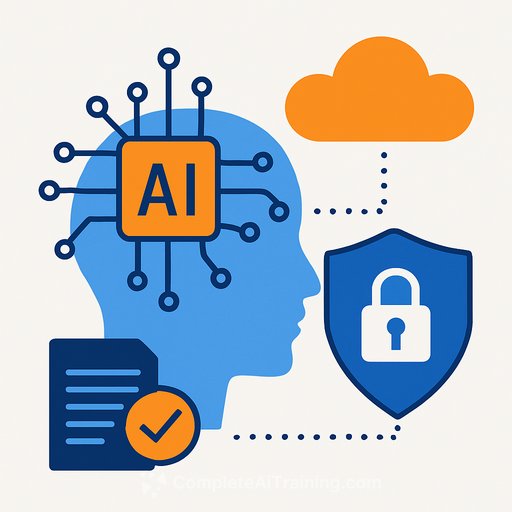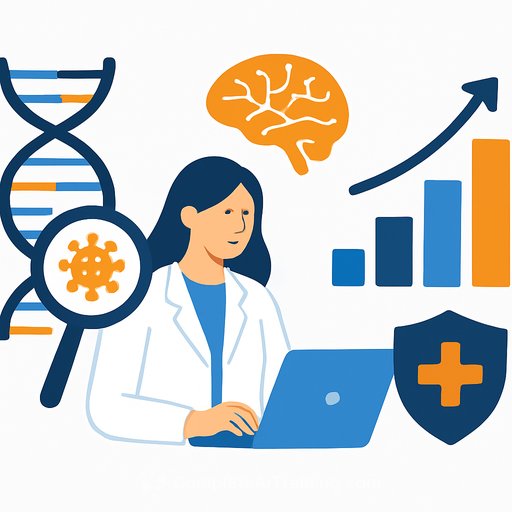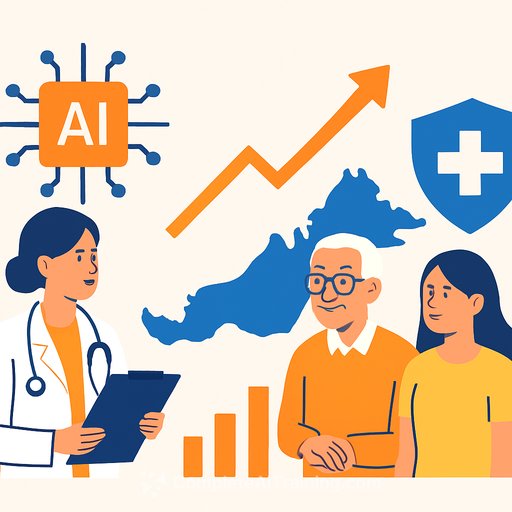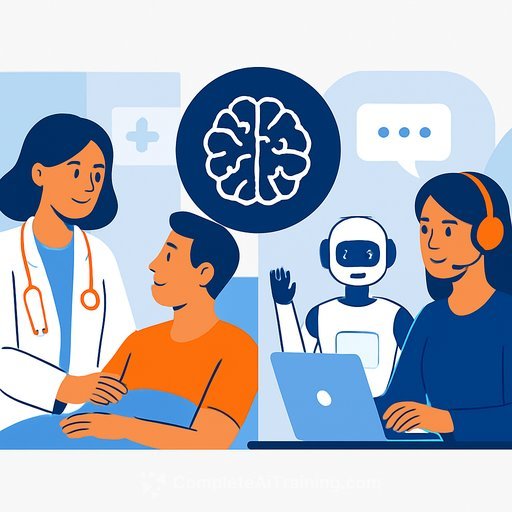The Next Era of Digital Healthcare with AI Diagnostics and Connected Care
Care is moving beyond hospital walls. As of February 2024, 78.6% of U.S. hospitals had a telemedicine solution in place, signaling a structural shift in delivery models. Digital tools-AI diagnostics, IoT-enabled devices, and remote monitoring-are no longer optional add-ons. They're becoming the fabric of everyday clinical care.
AI Diagnostics: Decision Support in the Clinician's Hand
AI is being embedded into tools clinicians already use, speeding up decision-making without disrupting workflows. An example: researchers at Imperial College London built an AI-enabled stethoscope that helps detect atrial fibrillation and heart failure early-an upgrade to a familiar instrument, not a wholesale replacement.
Wearable biosensors are advancing continuous data capture between visits. Early studies suggest they can guide dosing more precisely and reduce repeated blood draws. RNA-based kits for home testing are also emerging for early cancer screening in select contexts. As regulatory pathways mature, these tools are set to move from "interesting" to standard of care.
- Procurement checklist: peer-reviewed validation, prospective performance, workflow integration, bias and drift monitoring, and EHR interoperability.
- Clinical safety: clear indications/contraindications, transparent decision support, auditable outputs, and human-in-the-loop oversight.
Remote Patient Monitoring: Extending Care Beyond Hospitals
Remote patient monitoring (RPM) improves chronic disease control by tracking vitals like blood pressure, heart rate, and glucose from home. Research in npj Digital Medicine shows better control versus usual care, with fewer preventable readmissions. Continuous glucose monitors paired with apps allow timely therapy adjustments and tighter glycemic control.
Large-scale programs prove feasibility. The U.S. Department of Veterans Affairs runs one of the largest RPM networks, where participants share daily health data and report higher satisfaction and fewer hospitalizations.
- Start with defined cohorts: heart failure, COPD, diabetes, post-discharge high-risk populations.
- Build a repeatable model: device logistics, onboarding scripts, alert thresholds, nursing escalation, and clinician notification pathways.
- Measure what matters: time-in-range (glucose), BP control rates, 30-day readmissions, ED visits, therapy changes per alert, and patient-reported outcomes.
- Make it sustainable: align with reimbursement, clarify documentation, and automate data capture into the EHR.
See VA's approach to remote patient monitoring
IoT-Enabled Medical Devices: The Connected Care Backbone
Connected inhalers, wearable heart monitors, and smart infusion pumps feed real-time data to clinical teams. Early alerts enable timely interventions, reduce unnecessary visits, and support proactive care. Adoption is rising alongside a focus on sustainability, reflected by growth in medical device reprocessing markets.
- Integration must-haves: standards-based data exchange (HL7/FHIR), device identity management, and unified dashboards for signal-to-noise control.
- Safety and quality: strict infection prevention for reprocessed devices, consistent calibration, and cybersecurity hardening.
From Raw Data to Clinical Action
Data volume is not the problem-signal quality is. To keep workflows intact, translate streams into concise, actionable insights inside the EHR or the clinician's native tools. Avoid toggling between portals.
- Use tiered alerting: green/yellow/red thresholds, time-bounded alarms, and batching to cut alert fatigue.
- Create care bundles: clear next steps per alert type (dose adjust, outreach, triage) and assign roles to nursing, pharmacy, and care managers.
- Track ROI: admissions avoided, length of stay, therapy optimization, clinician time saved, and device adherence.
Equity and Access: Build for Every Patient
Digital health can widen access-or widen gaps-depending on execution. The WHO notes that internet access and digital literacy remain major barriers in many regions. In the U.S., rural connectivity still limits virtual care in some areas.
- Design for low connectivity: offline-capable apps, SMS/IVR fallbacks, device kiosks, and cellular-enabled hubs.
- Simplify onboarding: language support, visual instructions, and live setup assistance.
- Use community assets: CHWs, local clinics, and device lending libraries to reach underserved patients.
- Align policy: reimbursement parity, cross-state licensure support, and streamlined prior auth where applicable.
WHO on digital health and access
What Healthcare Leaders Can Do in the Next 90 Days
- Pick two use cases with clear outcomes: heart failure RPM and AI decision support for cardiac screening.
- Map the workflow: data capture, alerting, escalation, documentation, billing, and follow-up.
- Stand up governance: clinical safety review, model performance monitoring, data privacy, and incident response.
- Integrate first, pilot second: connect devices and AI outputs to the EHR before scaling.
- Train the team: short, role-based sessions for clinicians, nurses, and care coordinators.
- Publish a scorecard: baseline vs. 60-day outcomes and a cost-to-serve view.
The Path Forward
AI diagnostics, RPM, and connected devices are proving their value in accuracy, access, and continuity. The next step is disciplined integration: cleaner data, tighter workflows, reliable reimbursement, and equitable reach. Do that, and these tools move from "pilot" to everyday practice.
If your organization is building AI literacy for care teams and operations, explore practical training options curated by role: courses by job.
Your membership also unlocks:

